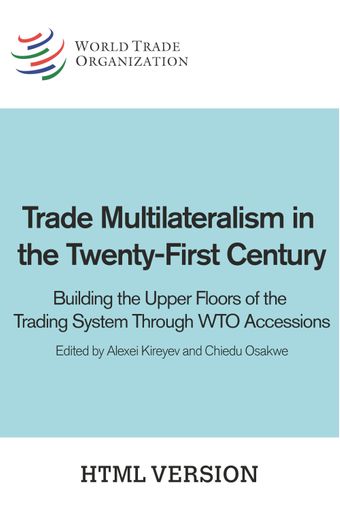Geographical Indications in the Accessions Landscape

- By: Tatiana Yanguas Acosta
- Source: Trade Multilateralism in the 21st Century , pp 17-17
- Publication Date: January 2017
- DOI: https://doi.org/10.30875/2a1642a1-en
- Language: English
Geographical indications are signs used to identify the origin of goods characterized by a given quality or reputation that is essentially linked to their geographical origin. They preserve traditional knowledge, foster the growth of local production and satisfy the needs of increasingly quality-conscious and demanding global consumers. Governments acceding to the World Trade Organization (WTO) have reformed their rules on geographical indications in order to achieve WTO consistency. In doing so, they have added value to the multilateral trading system by clarifying the scope of WTO obligations in the field of geographical indications in the following ways: minimum standards of protection; requirements for application to geographical indication protection; the relationship between geographical indications and trademarks; and the scope of substantive provisions with regard to geographical indications. This heightened understanding of the regulation of geographical indications has set new standards in the multilateral trading system. Acceding economies have followed international best practices and sometimes gone a step further by undertaking commitments that exceed those in effect among incumbent WTO members. Rule-making on geographical indications has also helped to prevent disputes on related issues. The lessons learned in the WTO accession process can serve other developing countries and emerging economies to unravel the legal and economic potential of geographical indications.
-
From This Site
/content/books/9789287046789s011-c005dcterms_subject,pub_countryId-contentType:WorkingPaperSeries -contentType:Periodical -contentType:BookSeries -contentType:ReportSeries105


